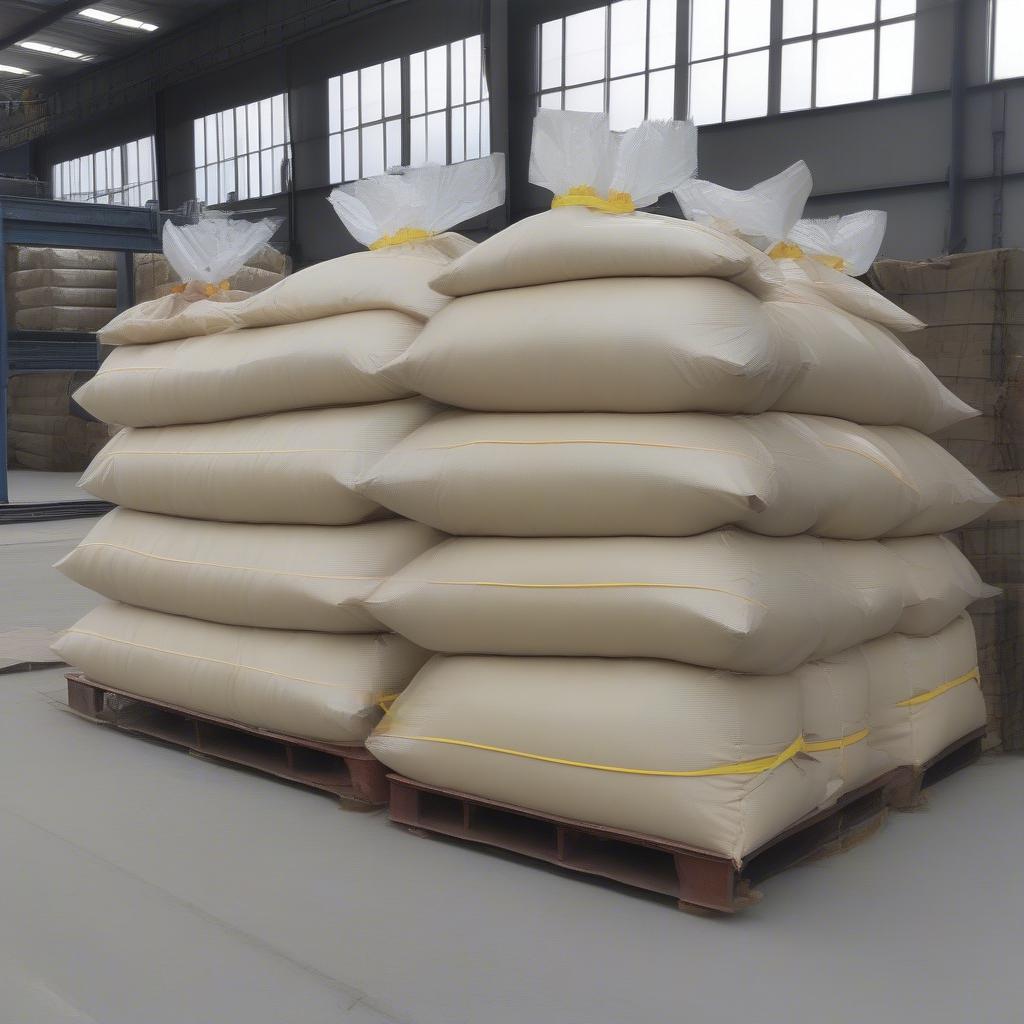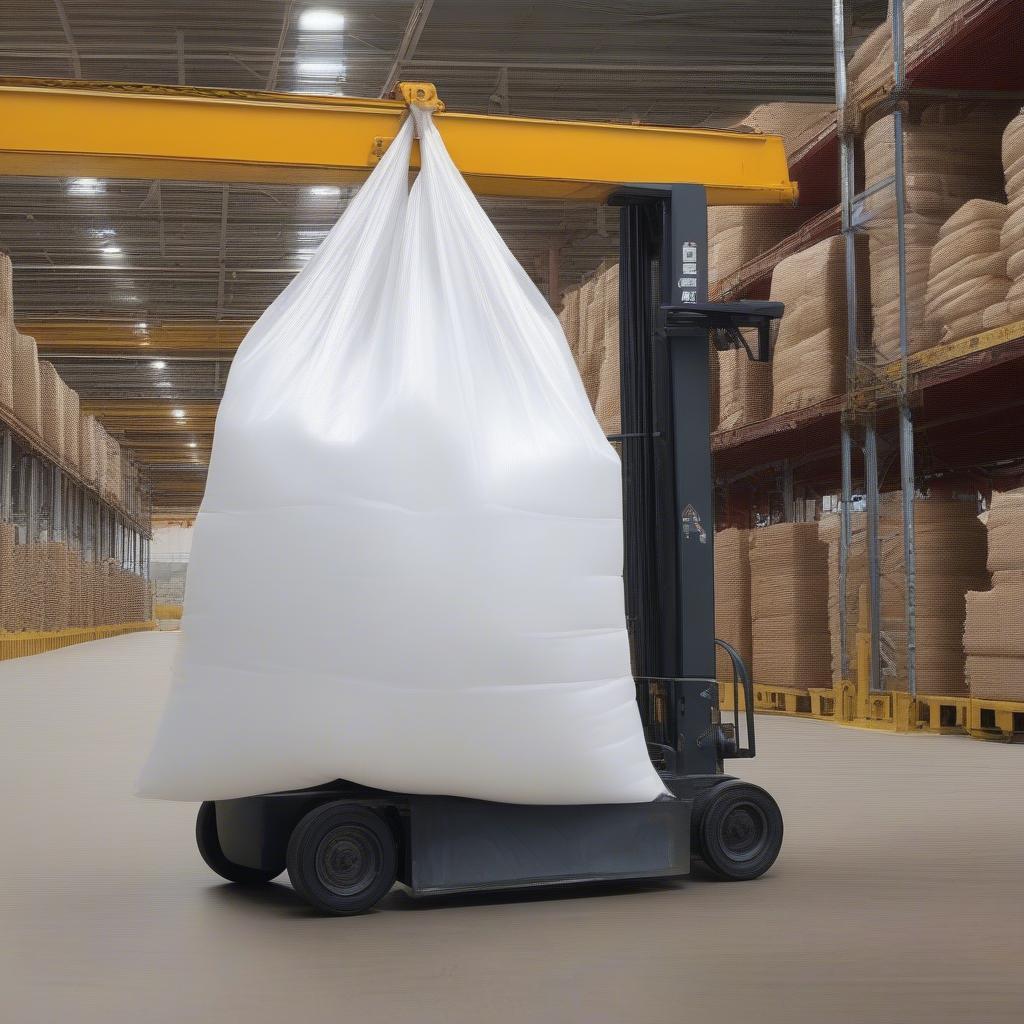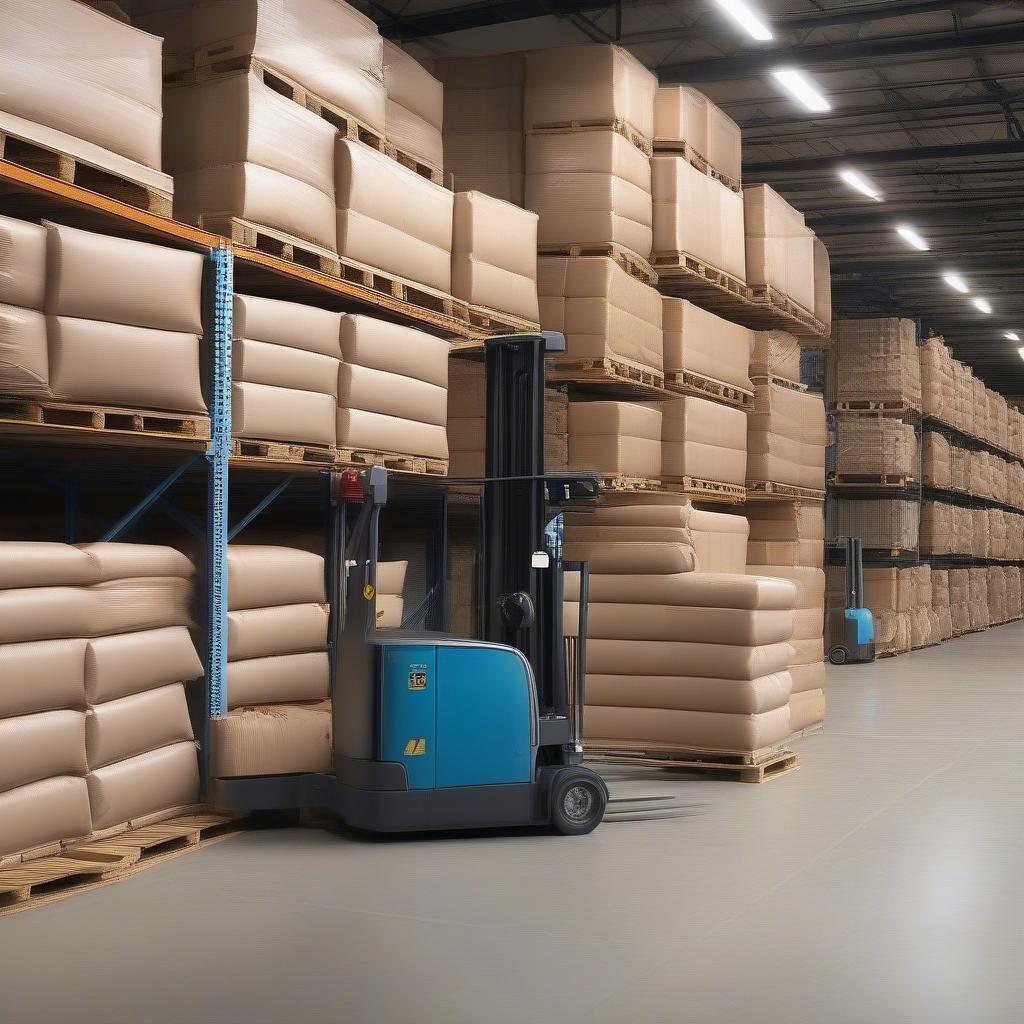Woven Bag
Poly Woven Bulk Bags: A Comprehensive Guide
Poly Woven Bulk Bags, also known as FIBCs (Flexible Intermediate Bulk Containers), are a versatile and cost-effective packaging solution for various industries. These large bags are ideal for transporting and storing dry flowable products, from agricultural commodities to construction materials. This guide explores everything you need to know about poly woven bulk bags, their uses, benefits, and key considerations for choosing the right bag for your needs.  Poly woven bulk bags in different sizes and capacities, showcasing their versatility for various industrial applications.
Poly woven bulk bags in different sizes and capacities, showcasing their versatility for various industrial applications.
Understanding Poly Woven Bulk Bags
Poly woven bulk bags are manufactured from woven polypropylene fabric, a strong and durable thermoplastic polymer. The woven structure provides exceptional strength and tear resistance, allowing the bags to hold significant weight, typically ranging from 500 to 2000 kg. These bags are designed with lifting loops for easy handling by cranes or forklifts, facilitating efficient loading, unloading, and transportation. They are a popular choice for businesses seeking a reliable and reusable packaging solution.
What are the Benefits of Using Poly Woven Bulk Bags?
Poly woven bulk bags offer numerous advantages over traditional packaging methods. Their durability and reusability reduce packaging waste and contribute to a more sustainable supply chain. These bags are also highly customizable, allowing businesses to tailor them to specific product requirements. Further, their space-saving design optimizes storage and transportation efficiency.
What industries use poly woven bulk bags? Industries ranging from agriculture and construction to chemicals and pharmaceuticals utilize these versatile containers. They are particularly beneficial for transporting and storing dry, flowable products such as fertilizers, cement, resins, and food ingredients.
 Poly woven bulk bags being used in various industrial settings, demonstrating their practical applications.
Poly woven bulk bags being used in various industrial settings, demonstrating their practical applications.
Choosing the Right Poly Woven Bulk Bags
Selecting the appropriate poly woven bulk bag requires careful consideration of several factors. The type of product being stored or transported, the required capacity, and the intended handling method all influence the bag’s specifications. Let’s delve into the key factors to consider:
Key Considerations for Selecting Poly Woven Bulk Bags
- Safe Working Load (SWL): This is the maximum weight a bag can safely hold. Choosing the correct SWL is crucial for safety and preventing bag failure.
- Size and Dimensions: Bags come in various sizes and dimensions to accommodate different product volumes and storage spaces.
- Fabric Type and Construction: The fabric type and weave pattern affect the bag’s strength, durability, and resistance to tearing and punctures.
- Lifting Loops: The number and type of lifting loops determine how the bag will be handled and transported.
- Liner Options: Liners can be added to provide additional protection against moisture, contamination, or product loss.
What are the different types of poly woven bulk bags? Several specialized types of poly woven bulk bags are available, such as ventilated bags for products requiring airflow, UN-certified bags for hazardous materials, and food-grade bags for edible products. non woven bag sealing machine price
“Choosing the right bulk bag is paramount for ensuring safe and efficient product handling,” says industry expert, Dr. Sarah Miller, Packaging Engineer at Sustainable Packaging Solutions Inc. “Understanding the specific requirements of your product and application is crucial for selecting the optimal bag design and specifications.”
Caring for and Maintaining Poly Woven Bulk Bags
Proper care and maintenance can significantly extend the lifespan of poly woven bulk bags, maximizing their cost-effectiveness.  Proper storage and handling techniques for poly woven bulk bags, ensuring their longevity and safety.
Proper storage and handling techniques for poly woven bulk bags, ensuring their longevity and safety.
Tips for Extending the Life of Your Bulk Bags
- Proper Storage: Store bags in a dry, cool, and well-ventilated area, away from direct sunlight and sharp objects.
- Careful Handling: Avoid dragging bags across rough surfaces, which can cause abrasion and damage the fabric.
- Regular Inspection: Inspect bags for signs of wear and tear before each use, and remove any damaged bags from service.
“Proper storage and handling practices are essential for preserving the integrity and extending the lifespan of poly woven bulk bags,” adds Dr. Miller. “Regular inspections and timely repairs can prevent costly accidents and product loss.” ultrasonic non woven bag sealing machine price
Conclusion
Poly woven bulk bags are a reliable, cost-effective, and sustainable packaging solution for a wide range of industries. By understanding the key factors involved in selecting and maintaining these bags, businesses can optimize their packaging operations and ensure the safe and efficient handling of their products. Choosing the right poly woven bulk bags requires careful consideration of factors such as SWL, size, fabric type, and handling requirements. Remember to inspect and maintain your bags regularly to maximize their lifespan. non woven bag welding machine
FAQ
- What is the typical lifespan of a poly woven bulk bag?
- Can poly woven bulk bags be recycled?
- What are the different types of lifting loops available for bulk bags?
- How can I determine the correct SWL for my application?
- What are the advantages of using liners with bulk bags?
- Are there specific regulations for transporting hazardous materials in bulk bags?
- What are the cost-saving benefits of using reusable bulk bags?
For further assistance, please contact us at Hanoi, Vietnam or Tech Avenue, Suite 12, San Francisco, CA 94105, USA. We have a 24/7 customer support team.
